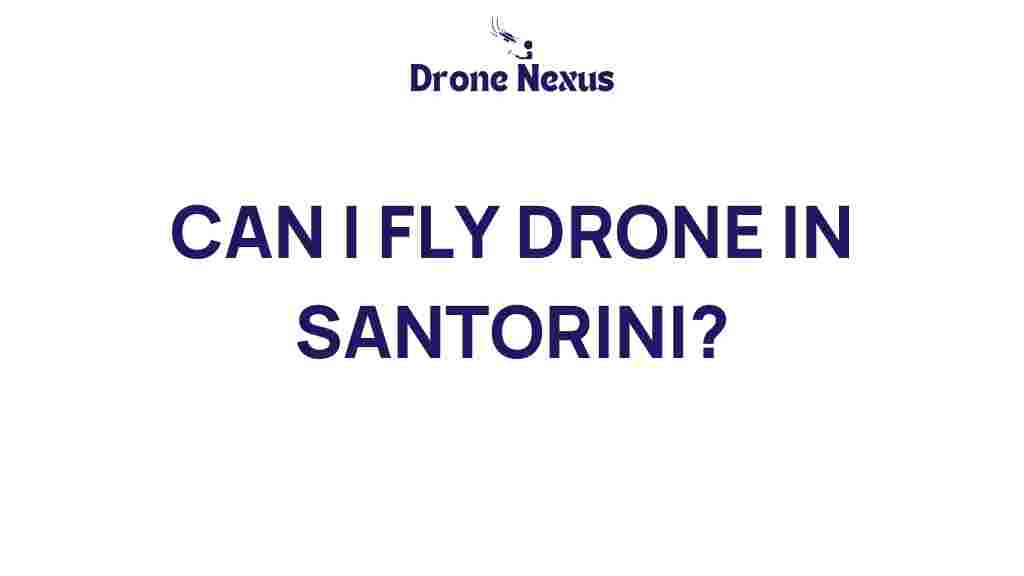Drone Regulations: What You Need to Know Before Flying in Santorini
Flying drones has become a popular pastime for both hobbyists and professionals alike, especially in breathtaking locations like Santorini, Greece. This picturesque island, famous for its stunning sunsets and whitewashed buildings, offers a unique backdrop for aerial photography and videography. However, before you pack your drone for a trip to this idyllic location, it’s crucial to understand the drone regulations that govern the use of these devices. In this article, we will unveil the secrets behind flying drones in Santorini, covering everything from legal requirements to safety tips.
Understanding Drone Regulations in Greece
When it comes to flying drones in Santorini, adhering to local drone regulations is essential. Greece has specific laws regarding drone usage that align with European Union regulations. Here’s a breakdown of what you need to know:
- Drone Registration: All drones weighing more than 250 grams must be registered with the Hellenic Civil Aviation Authority (HCAA).
- Remote Pilot License: If your drone weighs more than 2 kilograms, you are required to have a Remote Pilot License.
- Insurance: Liability insurance is mandatory for commercial drone operations.
- Altitude Limits: Drones must not fly higher than 120 meters (approximately 394 feet) above ground level.
- No-Fly Zones: Certain areas, including near airports, military zones, and archaeological sites, are restricted. Always check local guidelines.
Preparing to Fly Your Drone in Santorini
To ensure a smooth flying experience in Santorini, consider the following steps:
Step 1: Check Local Regulations
Before your journey, familiarize yourself with the latest drone regulations in Greece. The HCAA provides up-to-date information on where and how you can operate your drone legally.
Step 2: Register Your Drone
If your drone exceeds the weight limit, make sure you register it online at the HCAA’s website. The registration process is straightforward and can typically be completed in a few steps.
Step 3: Acquire Necessary Licenses
If required, obtain the Remote Pilot License. This involves completing a training program and passing a written exam, ensuring you understand the operational principles and regulations.
Step 4: Purchase Insurance
For commercial operators, securing liability insurance is not only a legal requirement but also a smart move to protect yourself from potential risks.
Step 5: Plan Your Flights
Identify potential flying spots in Santorini, considering the scenery and lighting conditions. Popular locations include:
- Oia, known for its stunning sunset views
- Fira, the capital with panoramic vistas
- Akrotiri, with its impressive archaeological site
Drone Flying Etiquette in Santorini
In addition to following the drone regulations, it’s important to be respectful of the local community and environment while flying your drone. Here are some etiquette tips:
- Respect Privacy: Avoid flying over private properties or capturing images of individuals without their consent.
- Minimize Noise: Drones can be noisy. Be mindful of your surroundings, especially in quiet residential areas.
- Be Aware of Wildlife: Avoid disturbing local wildlife, particularly in natural reserves.
Troubleshooting Common Issues When Flying Drones in Santorini
Even seasoned drone pilots may encounter issues while flying. Here are some common problems and how to troubleshoot them:
Issue 1: Signal Loss
If your drone loses signal, it may automatically return to its takeoff point. To prevent this situation, ensure your drone is within range and avoid flying near large structures or cliffs that may obstruct the signal.
Issue 2: Low Battery Warning
Always monitor your drone’s battery level. If the battery is low, land your drone immediately to avoid a crash. Consider carrying extra batteries to extend your flying time.
Issue 3: GPS Issues
Sometimes, GPS signals can be weak, especially in urban areas. If you notice your drone acting erratically, try to fly in open spaces to regain a strong GPS signal.
Where to Fly Your Drone in Santorini
Finding the perfect location to fly your drone can enhance your experience significantly. Here are some recommended spots:
- Oia Village: Capture breathtaking views of iconic blue-domed churches against the backdrop of the Aegean Sea.
- Red Beach: The unique red cliffs and crystal-clear waters create a stunning aerial scene.
- Santorini Caldera: Aerial shots of the caldera offer a completely different perspective of the island’s beauty.
For further insights on where to fly, check out this guide on the best drone spots in Santorini.
Helpful Resources for Drone Pilots
Staying informed and educated about drone regulations can help you avoid issues while flying in Santorini. Consider the following resources:
- Hellenic Civil Aviation Authority (HCAA): For the latest updates on drone regulations in Greece.
- Drone Pilot Forums: Connect with other drone enthusiasts for tips and advice.
- Local Drone Clubs: Joining a local club can provide valuable insights into safe flying practices.
Additionally, you can visit this website for comprehensive information regarding drone flying internationally.
Conclusion: Enjoying Your Drone Experience in Santorini
Flying drones in Santorini can be a rewarding experience, allowing you to capture the island’s beauty from unique perspectives. However, it’s vital to adhere to the drone regulations set forth by the HCAA and to practice responsible flying. By understanding the legal requirements, preparing adequately, and being respectful of the local community, you can ensure a safe and enjoyable drone flying experience in one of the most beautiful destinations in the world. So, pack your drone, follow the guidelines, and get ready to unveil the stunning landscapes of Santorini from above!
This article is in the category Safety and created by DroneNexus Team
